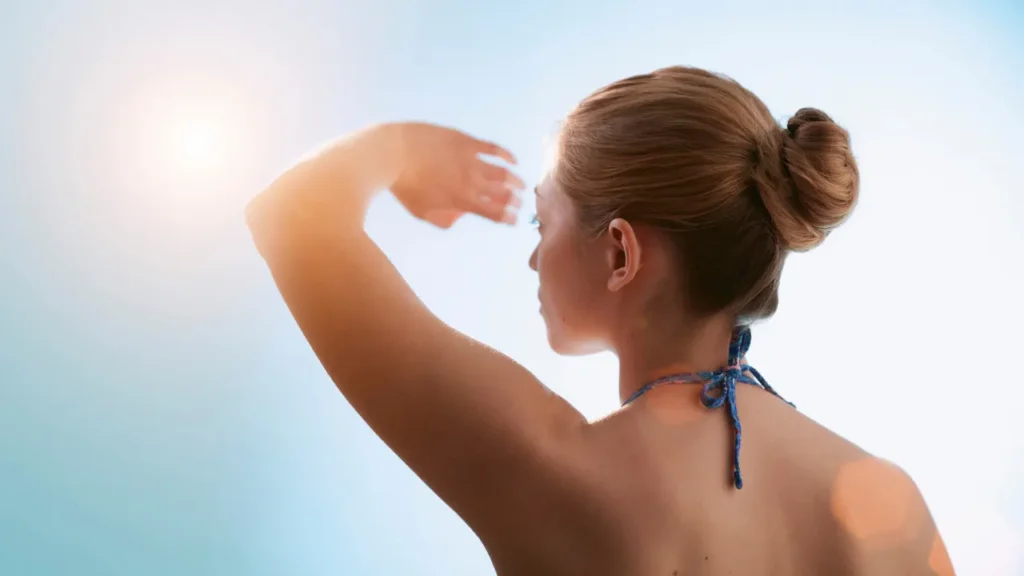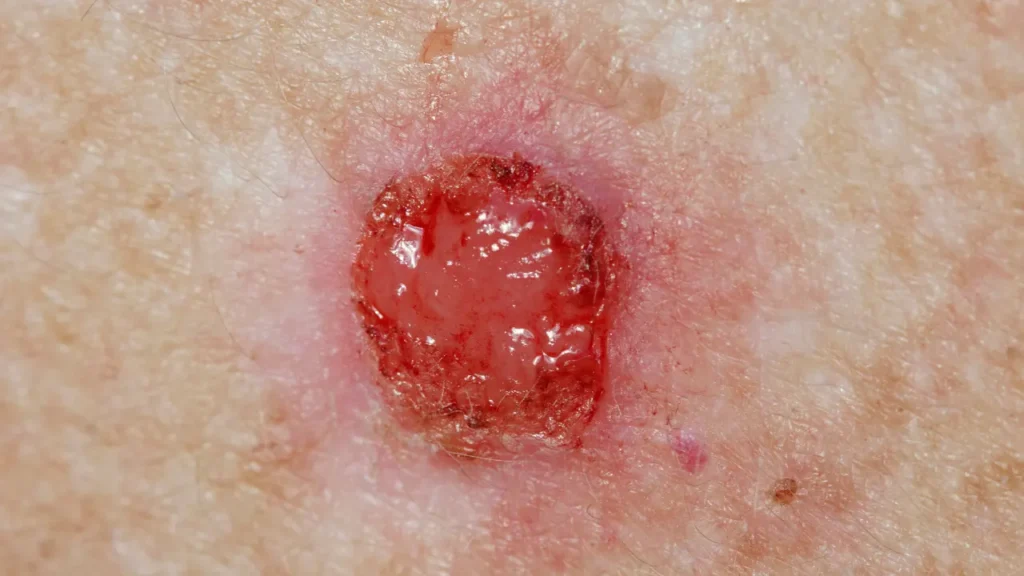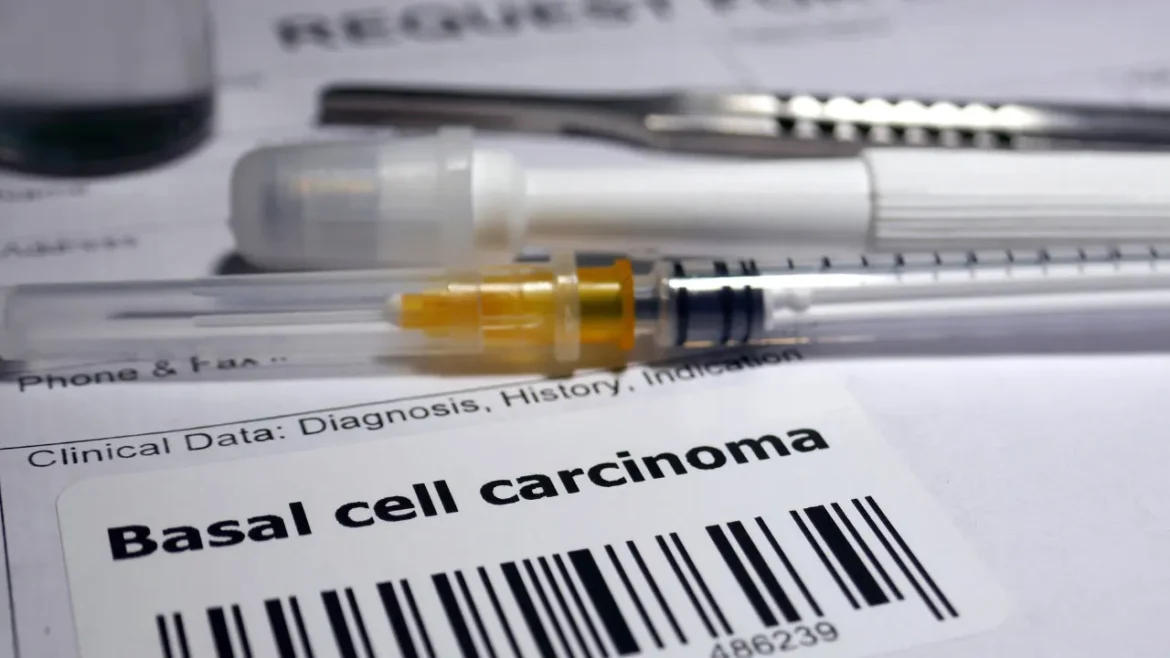Description
The innermost layer of the epidermal layer’s basal cells is where basal cell carcinoma (BCC) originates. The topmost layer of skin, the epidermis, acts as a protective shield between the body and the outside world. In addition to producing new skin cells, basal cells also create melanin, the pigment that provides skin with its color.
BCC can take the form of a pearly or waxy lump, a brown or a flat, flesh-colored scar-like lesion, a pink outgrowth with a slightly raised rolling border, and even a crusted depression in the center, or any combination of these. Very seldom does BCC spread to different regions of the human body, but it has the potential to grow there and invade nearby tissues, that includes bone.
You May Also Like:
THE CBD BUSINESS IS BOOMING. HERE’S WHY.
CBD CONTRACT MANUFACTURER –TOP 5 BEST IN CLASS FOR 2022
Basal cell carcinoma: Description, Causes, and Treatment Protocol is an original (HealthXWire) article.
Possible Causes
Being exposed to ultraviolet (UV) rays from the sun or tanning beds is the primary contributing factor to BCC. Individuals with fair skin, red or blond hair, and gray, blue, or green eyes are at greater risk of developing BCC since their skin possesses less melanin, they have less UV protection. A weaker body immune system, susceptibility to specific chemicals, previous diagnoses of different kinds of skin cancer, and a family record of BCC are additional risk factors.
Exacerbating and Mitigating Factors
Long-term UV exposure, especially throughout infancy and adolescence, and also previous episodes of sunburns are aggravating factors for BCC. To reduce your risk, use sunscreen containing a high sun protection factor (SPF) and stay away from direct sunlight between the time frames of 10 a.m. and 4 p.m. when the sunlight is the most scorching. BCC risks can also be decreased by wearing protective clothing, such as caps and long-sleeved shirts.

Standard Treatment Protocol(s)
The standard treatment options for BCC include the following procedures: –
Surgical Excision: The most prevalent type of therapy for BCC is surgical excision, which entails removing the malignant lesion plus a small portion of the surrounding tissue. This guarantees total cancer eradication and lowers the possibility of recurrence. The surgeon might employ a scalpel or a specialized surgical device to get rid of the tumor based on the dimensions and region of the lesion. Under some circumstances, the region may require a skin graft post-surgery.
Mohs Micrographic Surgery: A sophisticated surgical method called Mohs micrographic surgery has been used to eradicate skin malignancies, including BCC. Layers of the diseased lesion are removed throughout the treatment, and each layer is subjected to microscopic examination until every cancerous cell is eliminated. For BCCs that are large or complicated or that have returned after earlier treatment, Mohs surgery is especially beneficial.
Cryosurgery: Liquid nitrogen is used in cryosurgery for freezing and eliminating malignant tissue. This course of action is often saved for small, superficial BCCs.
Curettage and electrodesiccation: A technique termed curettage and electrodesiccation is done by using a sharp device known as a curette to scrape off the tumor which is followed by implementing an electric current to eliminate all the cancerous cells that may still be there. This process is often applied to BCCs that are tiny or superficial.
Radiation Therapy: High-energy radiation is used in radiation treatment to kill cancer cells. Normally, BCCs that are unable to be surgically eliminated or that have returned after previous therapies are the only ones who can receive this treatment. Individuals who are not appropriate candidates for surgical treatment because of their age or general health might opt for radiation therapy.
Electrosurgery: In electrosurgery, malignant tissue is removed by using an electric current. This course of action is often used for little, superficial BCCs.
Photodynamic therapy: To eliminate malignant tissue, photodynamic therapy uses a photosensitizing drug and a specialized light source. Typically, patients who have superficial BCCs are the only ones who receive this treatment.
Laser surgery: A laser is used during laser surgery to eliminate malignant tissue. Laser surgery is also only used on small BCCs.


Treatment Options
Numerous complementary and alternative therapies can be used in conjunction with traditional treatments for treating BCC. According to the degree of progression and severity of the malignancy, prescription medications or over-the-counter medicines may be utilized alone or as adjuvant therapies to standard treatment protocols.
Prescription Medications: Vismodegib, a hedgehog pathway inhibitor, serves as a prescription drug that has been proven to be successful in curing BCC. This medicine stops the development and expansion of cancerous cells by inhibiting a protein. When treating a locally advanced BCC that cannot be addressed by radiation or surgical therapy, vismodegib is commonly utilized. Vismodegib’s most frequent adverse reactions are hair loss, muscle spasms, weight loss, and impaired taste perception.
Over-the-Counter Medications:
Imiquimod cream is a topical immune system reaction modifier that encourages the body’s immune response to destroy cancer cells. Imiquimod is commonly given to the afflicted region thrice per week lasting a maximum of sixteen weeks to alleviate superficial BCC. Swelling, itchiness, redness, and skin flaking are all imiquimod side effects.
Vitamin D3 has become another over-the-counter remedy that has been demonstrated to be successful in addressing BCC. In animal research, topical vitamin D3 administration was found to trigger the death of cancerous cells and prevent tumor growth. According to a study, 70% of individuals who applied vitamin D3 cream topically twice a day for six weeks saw their BCC completely clear up. Most people tolerate vitamin D3 lotion well, and the only minor negative effects are skin irritation.
Nutritional Supplements: Considering their ability to prevent or treat BCC, a number of dietary supplements are being investigated. Green tea extract constitutes polyphenols, which have been found to have anticancer effects. A small human trial indicated that topical usage of herbal extract from green tea decreased the percentage of BCC tumors in people with previous cases of other skin cancers. Research on animals has shown how green tea extract may restrict the spread and development of BCC cells.
Vitamin E remains another dietary supplement that has been investigated for its ability to avoid or treat BCC. It has been demonstrated that the fat-soluble antioxidant vitamin E can prevent UV damage and lessen inflammation. According to one research, women with previous diagnoses of skin cancer who took vitamin E supplements orally for a year had a 30% lower risk of developing breast cancer. Supplements with vitamin E are usually safe, while large amounts can make bleeding more likely.
Herbal Remedies: Traditional treatments for skin diseases have included the use of several herbal medicines, notably BCC. Aloe vera, known for its wound-healing and anti-inflammatory qualities, is one such treatment. In a tiny study, it was discovered that 83% of the patients completely cleared their BCC after applying aloe vera gel two times per day for six weeks. While some people may experience allergic reactions, aloe vera gel generally can be considered safe.
Acupuncture: Acupuncture is a traditional Chinese medical practice that includes inserting tiny needles into particular body sites. Numerous health advantages of this therapy include decreasing pain and inflammation, enhancing the body’s immune response, and general well-being. It might be applied to treat BCC-related discomforts.
Massage therapy: The management of BCC may also benefit from massage therapy. Massage therapy aids in minimizing pain and inflammation, encouraging relaxation, and enhancing general well-being. It could be utilized to help treat BCC symptoms like stiffness and pain throughout the affected region.
Mind-body therapies: Yoga, meditation, and tai chi are a few examples of mind-body practices that can help control BCC. These treatments have been demonstrated to provide a range of health advantages, including relieving stress and anxiety, boosting mood, and encouraging relaxation. They may be utilized for controlling BCC’s psychological and emotional impacts which advance general well-being.
The active component of turmeric, curcumin, has also been investigated as a herbal therapy with the potential for treating BCC. In laboratory investigations, it was discovered that curcumin inhibits the growth and metastasis of cancerous cells and possesses antioxidant and anti-inflammatory characteristics. Based on a study, 86% of individuals who applied a topical curcumin cream two times per day for three months saw their BCC completely clear up. Supplements containing curcumin are usually risk-free, however, large doses can lead to gastrointestinal discomfort.


Conclusion
In conclusion, basal cell carcinoma is a form of skin cancer. This type of cancer demands vigilant attention and proactive measures for effective management. While its exact causes are not defined several risk factors are mentioned in the article. The standard treatment protocol that follows usually includes surgical excision, Mohs micrographic surgery, cryosurgery, curettage, electrodesiccation, etc, depending on the patient’s unique condition.
Besides, there are also alternative therapies that can support the standard protocol such as acupuncture, nutritional supplements, and others. Overall, ongoing surveillance through routine check-ups with dermatologists is crucial to detect any recurrence or changes in the condition. It takes a collaborative effort between patients and healthcare providers in order for patients to optimize their chances of successful treatment.


Additional resources for further reference
https://www.aad.org/public/diseases/skin-cancer/types/common/bcc
https://my.clevelandclinic.org/health/diseases/4581-basal-cell-carcinoma
https://www.webmd.com/melanoma-skin-cancer/melanoma-guide/basal-cell-carcinoma#1
Important Note: The information contained in this article is for general informational purposes only, and should not be construed as health or medical advice, nor is it intended to diagnose, prevent, treat, or cure any disease or health condition. Before embarking on any diet, fitness regimen, or program of nutritional supplementation, it is advisable to consult your healthcare professional in order to determine its safety and probable efficacy in terms of your individual state of health.
Regarding Nutritional Supplements Or Other Non-Prescription Health Products: If any nutritional supplements or other non-prescription health products are mentioned in the foregoing article, any claims or statements made about them have not been evaluated by the U.S. Food and Drug Administration, and such nutritional supplements or other health products are not intended to diagnose, treat, cure, or prevent any disease.
Table of Contents


